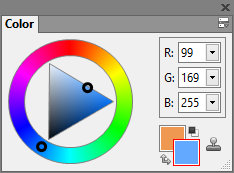
RGB exists exclusively in digital formats (e.g., mobile screens). It comprises Red, Green and Blue hues that combine to create extensive color variations. RGB – This color mode uses the additive process. © Daniel Skrok and Interaction Design Foundation, CC BY-SA 3.0 Improving images with a natural and vibrant look However, LAB’s large file sizes can delay load times.īranded Products (e.g., T-shirts, banners) LAB color is device-independent, making it easy to achieve exactly the same color across different types of media so your (e.g.) digital logo appears identically on a mug, banner, etc. It comprises one channel for lightness (L, ranging from the values 0–100) and two for color (A-the Green-Red Axis channel-and B, the Blue-Yellow Axis channel, ranging from +127 to -128). LAB – Also called CIELab, this mode is based on how humans perceive color.
:max_bytes(150000):strip_icc()/005-import-color-palette-into-paint-net-1702097-9a806f99e8a343f697bb4505dc2f240d.jpg)
256 color palette converter paint.net how to#
© Daniel Skrok and Interaction Design Foundation, CC BY-SA 3.0 How to Pick the Right Mode for the Context Illustration comparing LAB (Infinite Colors), RGB (Millions of Colors), CMYK (4 Printed Colors), Index (256 Colors), Greyscale (256 Shades of Grays) and Bitmap (2 Colors). Such inconsistencies can be easy to correct if you choose the right color mode (e.g.): This phenomenon happens because the printer’s colors (using the subtractive process) didn’t replicate the screen’s (using the additive). You may have seen how printed-out colors can look different from those on-screen.

A classic example of mixing all paint colors is that curious dark grey-brown hue. Each dot/splotch covers the medium (e.g., paper). Subtractive – involving the mixing of physical substances (e.g., ink, paint). We “create” white by mixing all the colors at full intensity black is the total absence of color. This is due to differences in color spaces (i.e., the specific organization of colors), and the two processes for producing color, namely:Īdditive – involving the blending of light. The designs we create appear on many devices and materials, and how we manipulate color greatly depends on the medium we use. Achieving Color Consistency and More in Screen and Print


 0 kommentar(er)
0 kommentar(er)
